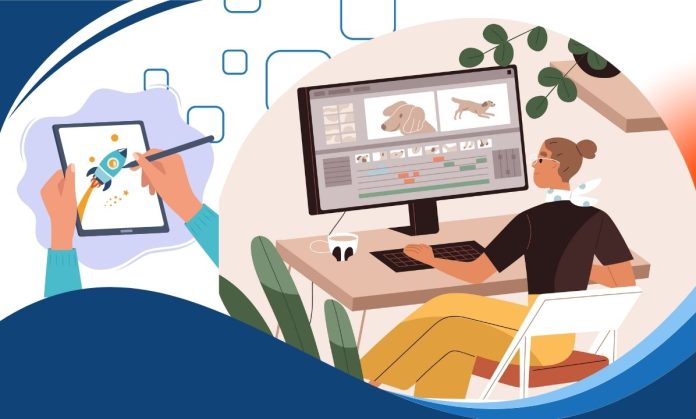Are you passionate about bringing characters and stories to life through animation? Becoming an animation designer could be the perfect career path for you. Animation designers play a crucial role in the entertainment industry, creating visually stunning and immersive experiences for audiences worldwide. Whether you dream of working on blockbuster films, television shows, video games, or even creating your own independent projects, this guide will provide you with the essential steps to kickstart your journey into the world of animation design.
1. Education and Courses:
While many successful Animation Designer are self-taught, formal education can provide you with a strong foundation and valuable skills. Consider pursuing a degree or diploma in animation, multimedia design, or a related field from a reputable institution. Look for programs that offer courses in 2D and 3D animation, character design, storyboarding, and digital art software such as Adobe Creative Suite, Autodesk Maya, or Toon Boom Harmony.
Following are animation courses available from various online platforms.
►Udemy:
Course: Complete Blender Creator: Learn 3D Modelling for Beginners,
Fee: $20 – $200 (one-time purchase)
Description: This online course on Udemy provides beginners with a comprehensive introduction to 3D modelling and animation using Blender, a popular open-source software.
►Coursera (offered by Michigan State University):
Course: 3D Art and Animation Specialization
Fee: $39 – $79 per month (subscription-based)
Description: This specialization includes a series of courses covering 3D modelling, texturing, rigging, animation, and rendering using industry-standard software like Autodesk Maya.
►Skillshare:
Course: The Ultimate Guide to 2D Animation in Adobe Animate
Fee: $8 – $20 per month (subscription-based)
Description: This course on Skillshare teaches the fundamentals of 2D animation using Adobe Animate, covering topics such as keyframes, tweening, character rigging, and more.
Additionally, there are numerous online courses and tutorials available for aspiring Animation Designers, ranging from free resources on platforms like YouTube to structured programs offered by online learning platforms such as Coursera, Udemy, and Skillshare. These courses can help you develop specific skills, learn new techniques, and stay updated with the latest industry trends.
2. Building a Portfolio:
A strong portfolio is essential for showcasing your talent and attracting potential employers or clients. As you hone your skills through education and practice, create a diverse portfolio that highlights your versatility and creativity. Include examples of your best animation work, character designs, storyboards, and any other relevant projects you’ve completed.
Consider creating personal projects or collaborating with others to build your portfolio. Participating in animation challenges, competitions, or online communities can also provide valuable feedback and exposure to your work.
3. Gaining Experience:
Internships, freelance opportunities, and entry-level positions are excellent ways to gain practical experience and build connections in the animation industry. Seek out internships at animation studios, production companies, or digital media agencies to get hands-on experience and learn from seasoned professionals.
Freelancing can also be a viable option, allowing you to work on a variety of projects and build your reputation as an animator. Platforms like Upwork, Freelancer, and Fiverr can help you find freelance gigs and connect with clients from around the world.
4. Networking:
Networking is crucial for advancing your career in the animation industry. Attend industry events, conferences, and workshops to meet other professionals, learn from industry experts, and stay updated with the latest trends and technologies.
Joining online communities, forums, and social media groups dedicated to animation can also help you connect with like-minded individuals, share your work, and discover new opportunities.
5. Salary Packages:
Salary packages for animation designers vary depending on factors such as experience, skill level, location, and the specific industry sector. According to the Bureau of Labor Statistics, the median annual wage for multimedia artists and animators was $77,700. However, salaries can range from entry-level positions earning around $40,000 to experienced animators earning six-figure salaries or more.
Keep in mind that salary packages may also include additional benefits such as health insurance, retirement plans, and bonuses, especially for full-time positions at established companies.
Becoming an Animation Designer requires dedication, creativity, and continuous learning. By pursuing education, building a strong portfolio, gaining experience, networking, and staying updated with industry trends, you can embark on a rewarding career in animation design. Whether you aspire to work on major motion pictures, television series, video games, or independent projects, the opportunities in the animation industry are limitless. So, roll up your sleeves, unleash your imagination, and start bringing your animated dreams to life!




























